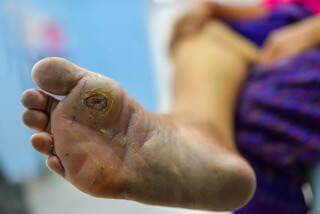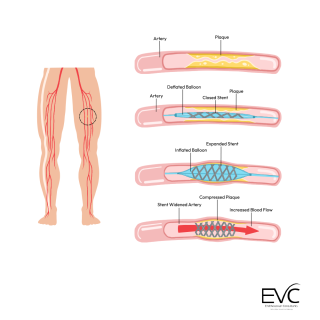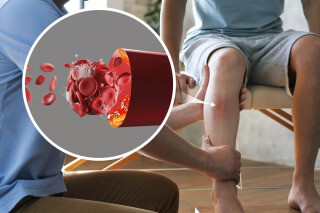- Leg pain when walking (claudication)
- Numbness or weakness
- Sores or wounds that won’t heal
- Coldness in your lower leg or foot
Peripheral Artery Disease (PAD) doesn’t just make walking harder—it can lead to serious complications if left untreated, including non-healing wounds, infections, and even limb loss. At Endovascular Consultants of Delaware, we specialize in limb salvage and PAD treatment using minimally invasive methods that restore circulation, relieve pain, and help patients move forward confidently.


Why trust us with your care? Because at EVC, we blend our specialized skill with the latest in medical technology with a deep understanding of your individual health needs. Our Delaware-based team of vascular specialists uses comprehensive evaluations and state-of-the-art diagnostic tools to pinpoint and treat PAD. Procedures like angioplasty and stenting are performed right in our outpatient facility, focusing on enhancing your circulation, supporting wound healing, and safeguarding your limbs with the least possible discomfort.
If you’re experiencing any of these symptoms, don’t wait. Early treatment can prevent complications.
At EVC, we take a comprehensive, personalized approach to treating PAD. Our goal is simple: restore blood flow, save limbs, and improve quality of life.
All procedures are performed with image guidance and small incisions—no hospital stay required.

If you’re experiencing symptoms—or if you’ve been told you might need an amputation—get a second opinion. You may have options that don’t involve surgery or limb loss.

When you come to EVC, you’re not just getting treatment—you’re gaining a team that’s dedicated to your long-term health and independence.
Every treatment plan is personalized based on your health, risk factors, and goals.
You may have been told you need surgery—but there are alternatives. At EVC, we treat PAD and vascular conditions using minimally invasive techniques that avoid long incisions and long recoveries.
If you’ve been told amputation or surgery is your only option, let’s explore less invasive treatments.
You don't have to live like this. Let's explore your options together.

Dr. Mark J. Garcia is a board-certified, world-renowned interventional radiologist with over 25 years of experience. He has held leadership positions across some of the nation’s top vascular centers and medical device companies. Known for his pioneering work in minimally invasive treatments, Dr. Garcia is committed to improving outcomes for every patient he meets.